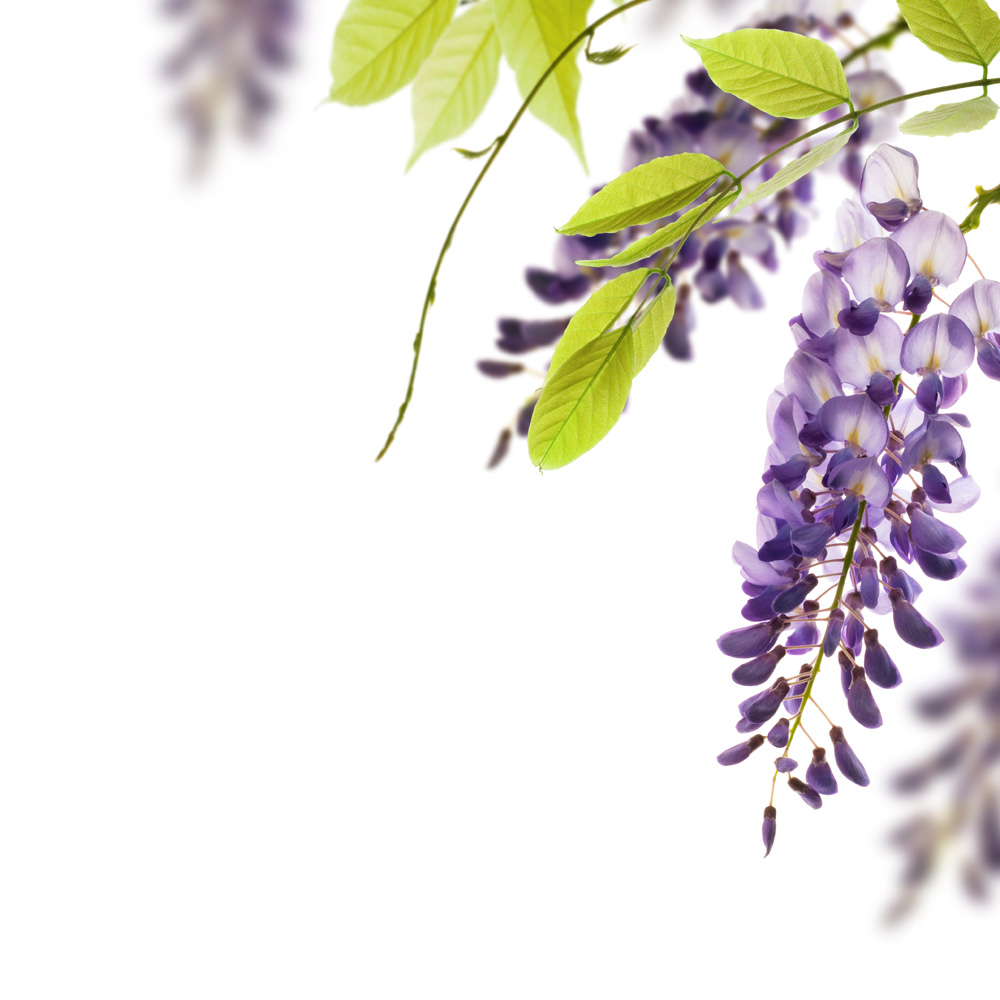Wisteria sp.
Common Name:
Wisteria

General information:
The wisteria is a vigorous low-growing vine, a legume, that is very popular as an ornamental. The wisteria is known for the beauty of its flowers, which appear in long, cascading racemes and are usually blue, purplish-blue, pink, or white. The flowers typically bloom April- June. There are a number of species which are suitable for bonsai, all of them being quite similar and varying mainly in the size and color of their flower racemes and number of leaflets in their compound leaves.
Japanese and Chinese wisteria are the traditional bonsai subjects, but those in the southeastern United States where American and Kentucky wisteria are to be found, should have good luck with them. The racemes and compound leaves of Japanese wisteria are the longest, with racemes from 8-20 inches and leaflets numbering 13-19. Chinese wisteria blooms are 6-8 inches long and the leaflets number 9-13. American wisteria blooms are the shortest at less than 4.5 inches, and leaflets number 9-15. The flowers of American wisteria are purplish or white and the seed pods are hairless. With such small blooms, American wisteria should be the most suitable for smaller sized bonsai. The Kentucky wisteria has blooms 6-12 inches long and leaflets numbering 9-15, and also has hairless seed pods.
Lighting:
Full sun to partial shade. Temperature: No information is available.
Watering:
The wisteria needs lots of water during the growing season. In summer, after flowering, place the pot in a tray of water so that the plant can soak up as much water as it needs. Do not allow the water to stagnate. Water heavily before and during flowering.
Feeding:
In general, wisteria need more fertilizer than most bonsai. However, in order to ensure good flowering, feeding should be minimized during and immediately following flowering. Fertilize heavily in spring before flowering and in late summer and autumn, until the leaves drop.
For organic and slow-acting fertilizers, feed double the usual strength for bonsai, applying fertilizer at the recommended intervals. For chemical fertilizer, you can either use it full strength every other week or you can use it at half strength every week.
Pruning and wiring:
There seem to be as many differing opinions on training of wisteria as there are authors on the subject. The training instructions here are an outline of the recommendations detailed by Chiharu Imai in Bonsai Today #38.
The wisteria is generally styled to look its best when it is in bloom, which usually means that the branches are shaped to support a weeping appearance when the cascading blooms are present. Wisteria can also be quite pleasing when in full leaf. In winter, when the branches are bare, they are not very attractive.
Structural pruning and wiring are done after the blooms have gone by. The dry racemes should be cut off, leaving 2-3 shoots at the base of the raceme. At the same time, pinch back the tender tips of these shoots. After this pruning, many tendrils will emerge. These tendrils grow rapidly, as much as an inch each day. The tender tips of these shoots should be pinched back as soon as they have 4-5 sets of leaves. Do not remove the new shoots until the end of August, otherwise the plant may set new flower buds and bloom again that summer, which will weaken the blooms the following spring. After August, completely remove any shoots that are not going to be used as branches. The wisteria sets blooms on the short lateral shoots rather than on the tips of the growing shoots, so removing the tips will not endanger the following spring’s bloom.
If you want a good bloom in the spring, remove any seed pods as soon as they appear so that the plant does not expend strength developing seeds.
Propagation:
Cuttings, layering
Repotting:
The roots of wisteria are extremely strong and vigorous. Young specimens should be repotted every year, and the roots must be combed out and reduced aggressively. Older trees should be repotted every 1-2 years. Wisteria should be repotted in early spring or in autumn. Pot in a fairly deep container to accommodate the vigorous roots.
Rémy Samson recommends a mix of 1 part loam and 1 part leaf mold. Simon and Schuster’s recommends 50% soil, 30% peat, and 20% coarse sand. In Bonsai Today #38, Chiharu Imai says that in Japan the usual mix is 7 parts akadama (a material similar to Turface), 2 parts sand, and 1 part peat moss. He also says that normal bonsai mix or even a sandy loam can be used.
The roots of wisteria often display small black nodules, which are nitrogen- fixing nodules. Wisteria can be attacked by nematodes, which manifest as larger, wart-like swellings in the roots.
Pests and diseases:
The seeds and seed pods of wisteria are poisonous. Do not allow children or animals to ingest them.
Wisteria species include:
Japanese Wisteria - Wisteria floribunda; Chinese Wisteria - Wisteria sinenis; American Wisteria - Wisteria frutescans; Kentucky Wisteria - Wisteria macrostachya
Compiled by Sabrina Caine
